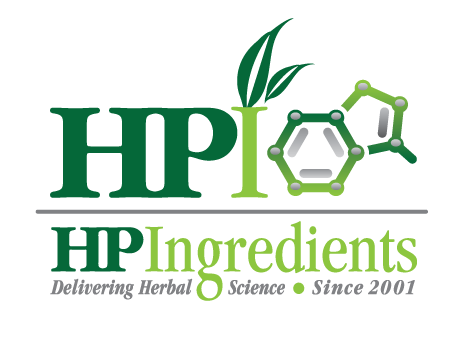Fish and seafoods (called “blue foods”) are growing in consumer demand as they are healthier options for meals. This means that on the supplyside, there is a new pressure to produce sustainably. One review of the aquatic foods sector revealed how fisheries and aquaculture can play greater roles in delivering healthy diets and more sustainable, equitable and resilient food systems around the world.
According to researchers, the global demand for blue foods will double by 2050 and will be met primarily through increased aquaculture production rather than by capture fisheries.
Five peer-reviewed studies published in Nature lay out the opportunities in the aquatic, or “blue,” foods sector in the coming decades to attempt to reduce malnutrition, the environmental footprint of the food system, and also to provide sustainability for workers throughout the globe.
“People are trying to make more informed choices about the food they eat, in particular the environmental footprint of their food,” said marine ecologist Ben Halpern. He and his team examined the environmental sustainability of aquatic foods, the potential for the growth of small-scale producers and the climate risks that face aquatic food systems. “For the first time we pulled together data from hundreds of studies on a wide range of seafood species to help answer that question. Blue foods stack up really well overall and provide a great option for sustainable food.”
Further, according to researchers, investing in the improvement of fisheries may increase global consumption and have effects on reducing rates of malnutrition. For example, a high-growth modeling scenario demonstrated that increasing supply by 15.5 million tons (8%), causing a drop in prices, would reduce ca nutrient deficiency cases by 166 million.
Blue foods are known to have more favorable nutritional benefits and potential for sustainability gains than terrestrial animal-source foods. Compared to chicken, trout has approximately 19 times more omega-3 fatty acids; oysters and mussels have 76 times more vitamin B-12 and five times more iron; and carp has 9 times more calcium.
“For the first time we got to see what more aquatic food production would mean for human health globally,” said assistant researcher Christopher Free, who with fellow marine scientist Jacob Eurich co-authored a study that examines the nutritional potential of blue foods. “By making aquatic foods cheaper to the consumer, there’s likely going to be a shift away from land-based foods like chicken, beef and dairy. I think what made us really excited is knowing that aquatic food could be a useful solution to combating malnutrition, and really showing that comprehensively for the first time.”
On average, the major species produced in aquaculture, such as tilapia, salmon, catfish and carp, were found to have environmental footprints comparable to chicken, the lowest-impact terrestrial meat. Small pelagic species like sardines and anchovies, bivalves and seaweeds all already offer lower stressors than chicken.
More than 2,500 species or species groups of fish, shellfish, aquatic plants and algae are caught or cultivated globally for food, providing livelihoods and incomes for more than 100 million and sustenance for one billion.
This new research and perspective solidifies the expected continued strong growth of salmon and the need for a supplement additive for salmon farmers to dramatically reduce the need for antibiotics. NatControl™ does just that – and it’s all natural.
NatControl™ is a combination of ParActin® Andrographis paniculata extract and micro-pulverized macroalgae, formulated to improve feed uptake by fish and simultaneously shift the salmon’s immune response to one mediated by cells (TH1), promote elimination of intracellular pathogens such as P. salmonis and other viral agents.
The idea is to stimulate the fish’s natural immune response so they are less susceptible to diseases that require antibiotic treatment. Due to the dramatic rise in awareness of omega-3 essential fatty acid consumption (DHA and EPA) and correlated demand for salmon, which consumers recognize as being a food high in omega-3 EFAs, the need to address the health of the original organism – salmon – is crucial. And this is where NatControl contributes.
Salmon are vulnerable to piscirickettsiosis, which invades the inside of the cells, and is responsible for significant mortality numbers. Piscirickettsiosis is the primary diagnosis associated with the use of antibiotics in salmon farming, as outbreak prevention is an objective pursued by the producers.
The poultry and beef industries have now become more aware of not giving their livestock antibiotics and using other methods to keep these animals healthy. The aquaculture industry also has an antibiotics problem. Just like raising livestock and poultry, many large-scale fish-farming operations rely on the misuse and overuse of antibiotics to compensate for crowded, stressful conditions. Many fish and other seafood are given low doses of antibiotics in feed over long periods of time to try to prevent the spread of illness.
As an example, Salmon Antarctica in Chile is utilizing NatControl™ in its freshwater and ocean facilities. In its freshwater facilities, salmon and rainbow trout are given NatControl™ for 2.5 months prior to vaccine injections. With the supplementation of NatControl™ there was a 22% improved survival rate compared to just vaccine by itself for infectious pancreatic necrosis (IPN) virus. Once the fish are transferred to ocean facilities, NatControl™ treatment is ceased for 15 days, then back on for 15; this cycle is repeated until the fish reach maturity. NatControl™ helps reduce the use of antibiotics and other drugs in aquaculture, providing the industry a natural, alternative approach to ensure the health of the fish.
NatControl™ was awarded US patent #10,967,035 B1 on April 6, 2021.


